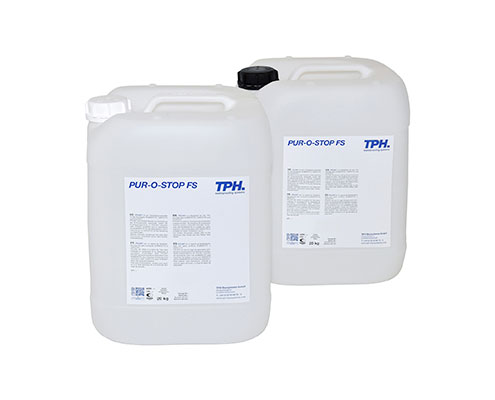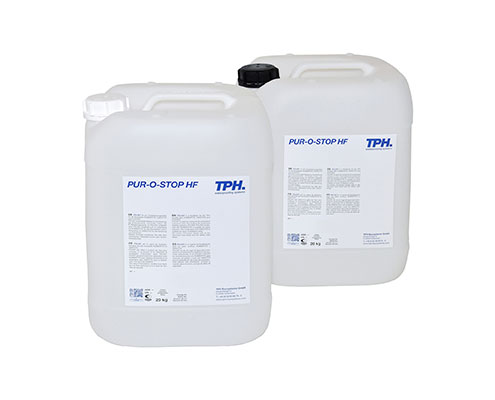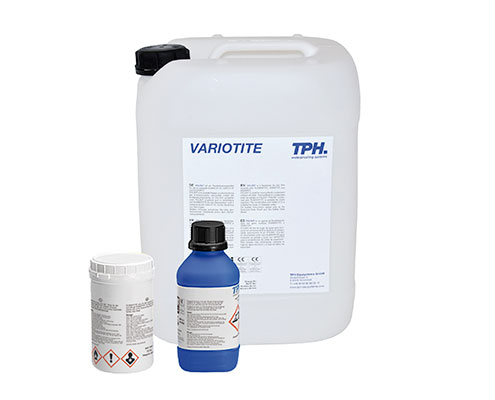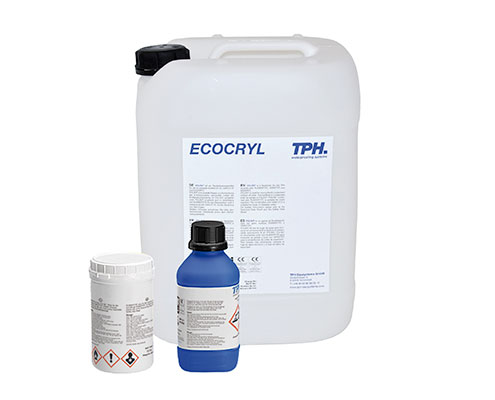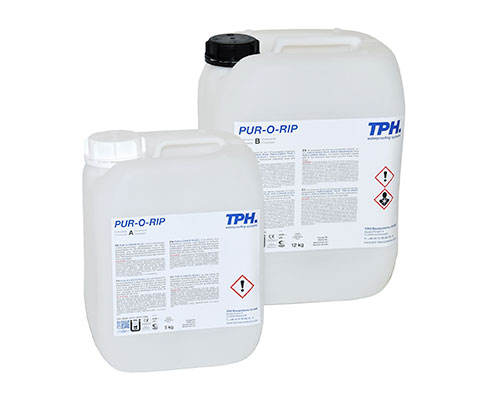
Waterproofing Systems for Stopping Water Ingress
The outstanding properties of PUR-O-STOP FS, for stopping strong water inflows, were demonstrated clearly in a test in front of an expert audience.
A strong water flow running through loose siliceous rock (grain size: 8-16) was stopped within a very short time. PUR-O-STOP FS is particularly suitable for sealing and simultaneous consolidation in civil engineering, special civil engineering and tunnel construction.
Acrylate gels for stopping water ingress
With the fast reacting acrylate gels ECOCRYL and VARIOTITE it is possible to stop smaller water streams. For this purpose, the products must be adjusted to their fastest reaction time (approx. 10-15 s) by using the corresponding initiator quantity for mixing the B-component (see Technical Data Sheet).
Injection should be carried out with the largest possible volume flow via packers with a large internal diameter. Before this, the water inflow must be dammed up as far as possible. This can be done using fast-reacting cements, such as F30 and F60, or by mechanical tamping, e.g. with a cloth. When stopping the inflowing water, however, even fast-reacting acrylate gels have their limitations, as the acrylate gels are water-dilutable. In the case of very large defects, through which the water penetrates into the component, as well as in the case of very high flow rates of the water, it makes more sense to use polyurethane foams, such as PUR-O-STOP, for stopping water, as these cannot be diluted by the water.
Polyurethane resins for stopping water ingress (SPUR)
PUR-O-STOP and PUR-O-STOP HF are suitable for temporarily stopping incoming water (SPUR). The fact that this is a temporary sealing has nothing to do with the fact that PUR-O-STOP and PUR-O-STOP HF are not permanent products. Rather, it has to do with the fact that injection against incoming water influences the formulation of the polyurethane systems, as they react with water.
If the water content is too high compared to the amount of product, foams may be formed that are not permanently stable. However, if the water content is appropriate compared to the product quantity, permanently stable foams can be produced. However, since the amount of water cannot be verified at the construction site, polyurethane foams are generally referred to as temporary waterproofing.
Permanent waterproofing is then achieved by post-injection with two-component polyurethane resins (PUR-I), such as PUR-O-CRACK and PUR-O-RIP, or with acrylate gels, such as RUBBERTITE and VARIOTITE.

